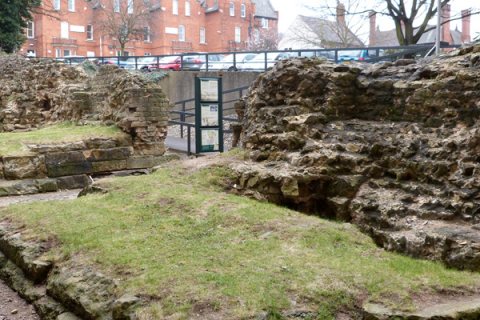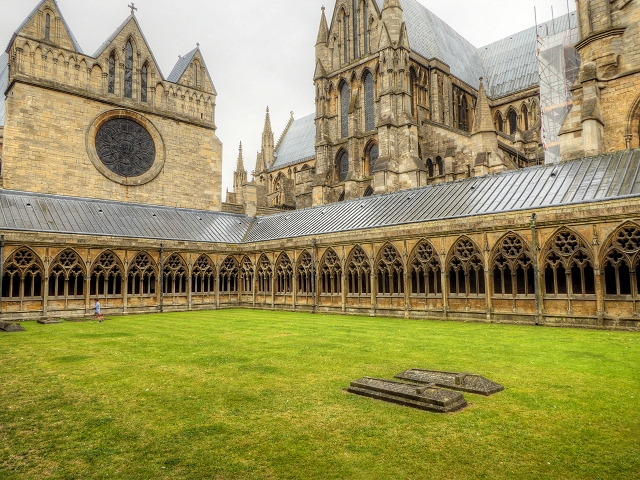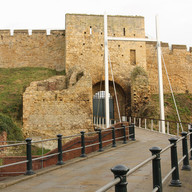If I were to mention Harlaxton or Grantham to people, most would have no idea where it is - perhaps even many Brits! When you first arrive in a country to study abroad, you may not have the best sense of where you're headed either. You may have looked it up on a map, perhaps figured out how far by train or car it is from the capital, but you are probably still unsure of the geography and history of the place. Yet, by the end of the first two weeks in-country, you have a much better idea. That was certainly true for those of us at Harlaxton College.
Harlaxton College is approximately a 3-hour drive north of London and an hour east of Nottingham. The college itself is located in the small village of Harlaxton in the Midlands, Lincolnshire in particular. It is very much the countryside. The landscape here would remind most Americans of Kentucky or Tennessee: rolling green hills dotted with leafy trees and farmland. It truly is the perfect location for a small mid-western university to have an international campus as the landscape is so similar that one may think they are at home. Until they see the groupings of semi-attached houses, the turrets of Harlaxton Manor, the spires of cathedrals, or the stony outline of Belvoir Castle.
About an hour's walk down the road from Harlaxton is the town of Grantham. Like many towns in the Midlands, an important region during the Industrial Revolution, it is fairly industrial. By the end of the term, we were all familiar with W Mart and other shops, grocery stores, restaurants, and pubs.
This week, however, our British Studies excursion took us a bit further afield to Lincoln. Lincoln is quite an old city. The city originally began as a Roman garrison for retired soldiers. There are still ruins and remnants from those Roman days found throughout the city, especially in the inner walled portion. The stone walls, though, are leftover from the Normans who built Lincoln castle and the original Lincoln Cathedral after William the Conquerer took over England in 1066. We went on a walking tour guided by our professors despite the cold temperatures - 3C/34F - dampness, and wind. My British Studies professor was Dr. Bujak, and many a Harlaxton alum will tell you how great of a teacher he was. He may have been strict at times, and his impassioned lectures occasionally came off as a bit eccentric. Still, he was truly a great professor, which meant our tour, though unpleasantly cold, was fascinating and filled with quite a few inside jokes. We also left the tour with a new inside joke about flying buttresses. Who knew Gothic cathedral architecture could get a tickle out of a group of 20-year-old college students?
We had a lunch of cucumber, butter-and-jam, or cheese sandwiches. I, unluckily, got a cheese sandwich. Grilled cheese sandwiches are fine, but non-grilled cheese sandwiches with butter... not my favorite. After eating our sack lunches, we had some time to explore the city a bit before the choir had to meet back at the Cathedral for a performance. I went a little way outside the walled city center toward the river with a couple of friends, where we stumbled upon a chocolate shop selling some very delectable truffles. I would have loved to explore a bit more, but I had to go sing.
I hadn't been in a choir since elementary school. In 5th grade, I started playing the violin, and from then on, I was in the orchestra instead of the choir - except for on Sundays during church. However, singing non-church-related songs in a cathedral is a very different experience from singing mass parts with the whole congregation. I have always loved how music moves through a church, the notes hanging in the air and building on each other as they float upwards. We sang just two pieces - Vem Kan Segla and Sumer Is Icumen In. The latter is a medieval song written in Middle English and Latin, though we sang the Middle English version. The song, a round written for six voices in the 13th century, is the oldest known with English words. You can see images of the original manuscript on the British Library's website. They have some great interactive timelines to explore as well. If you'd like to hear the song, check out the YouTube video below.
After singing, we had just enough time to walk along the inner city wall before boarding the coach and heading back to the manor, just as the sun was beginning to warm things up.



































